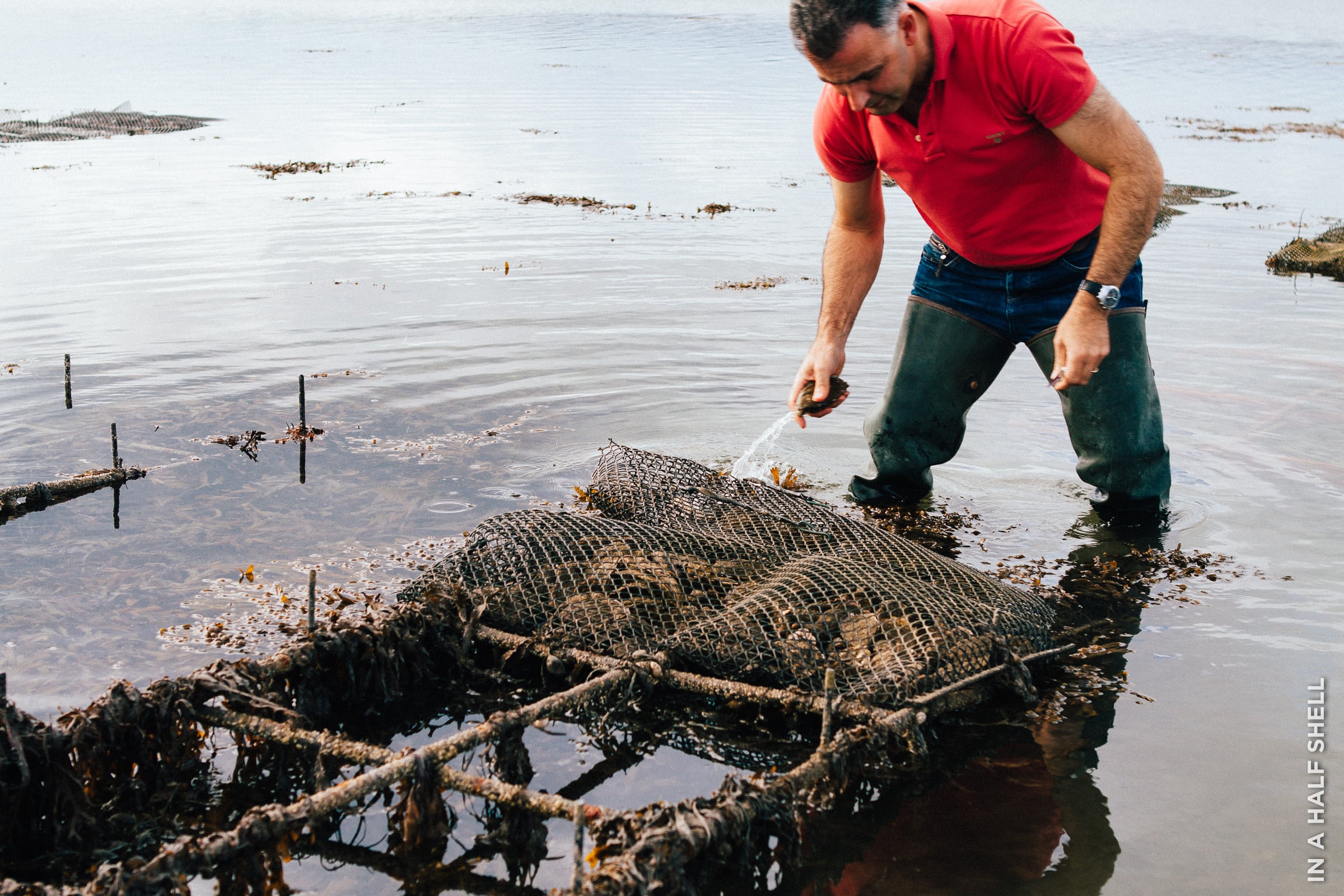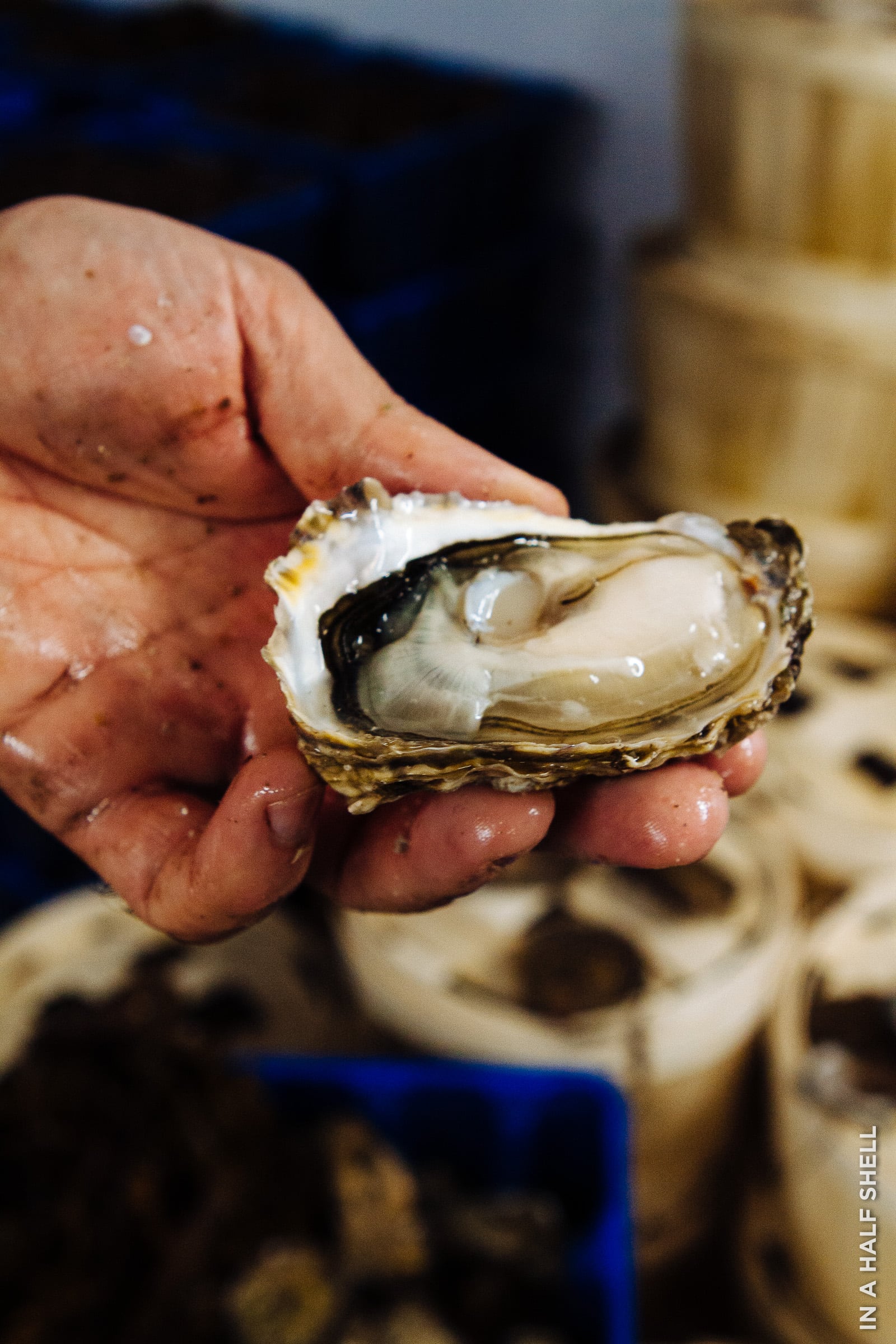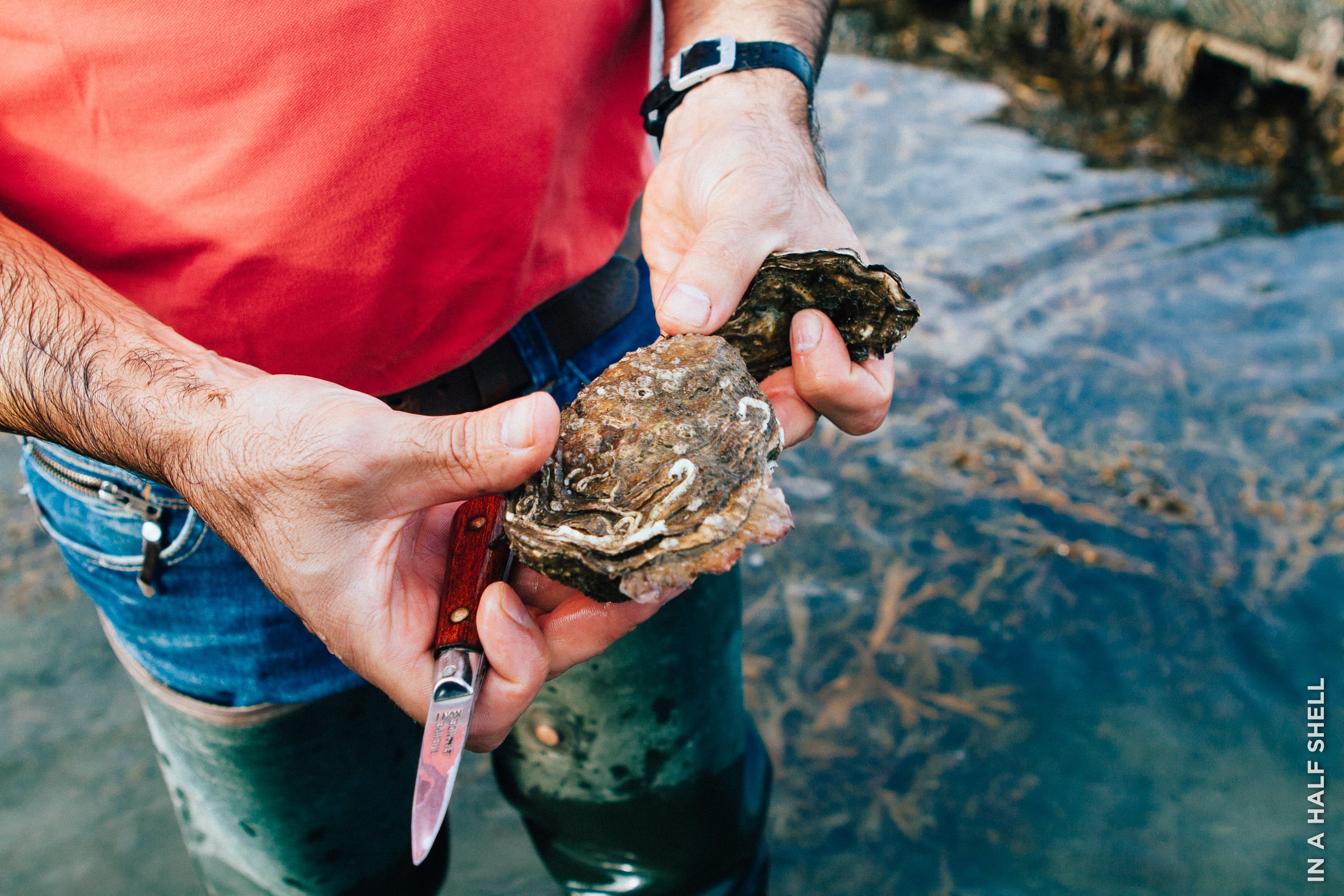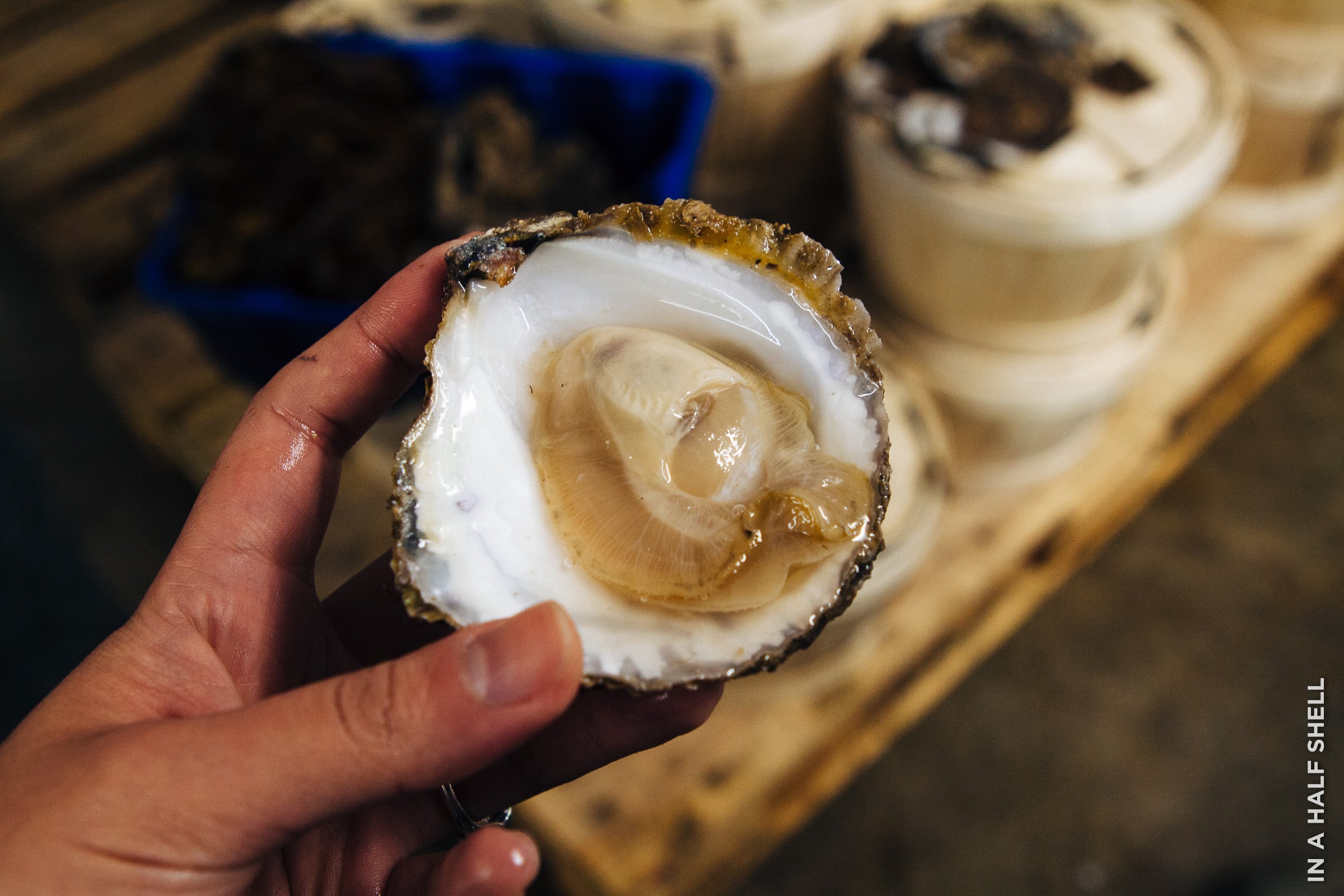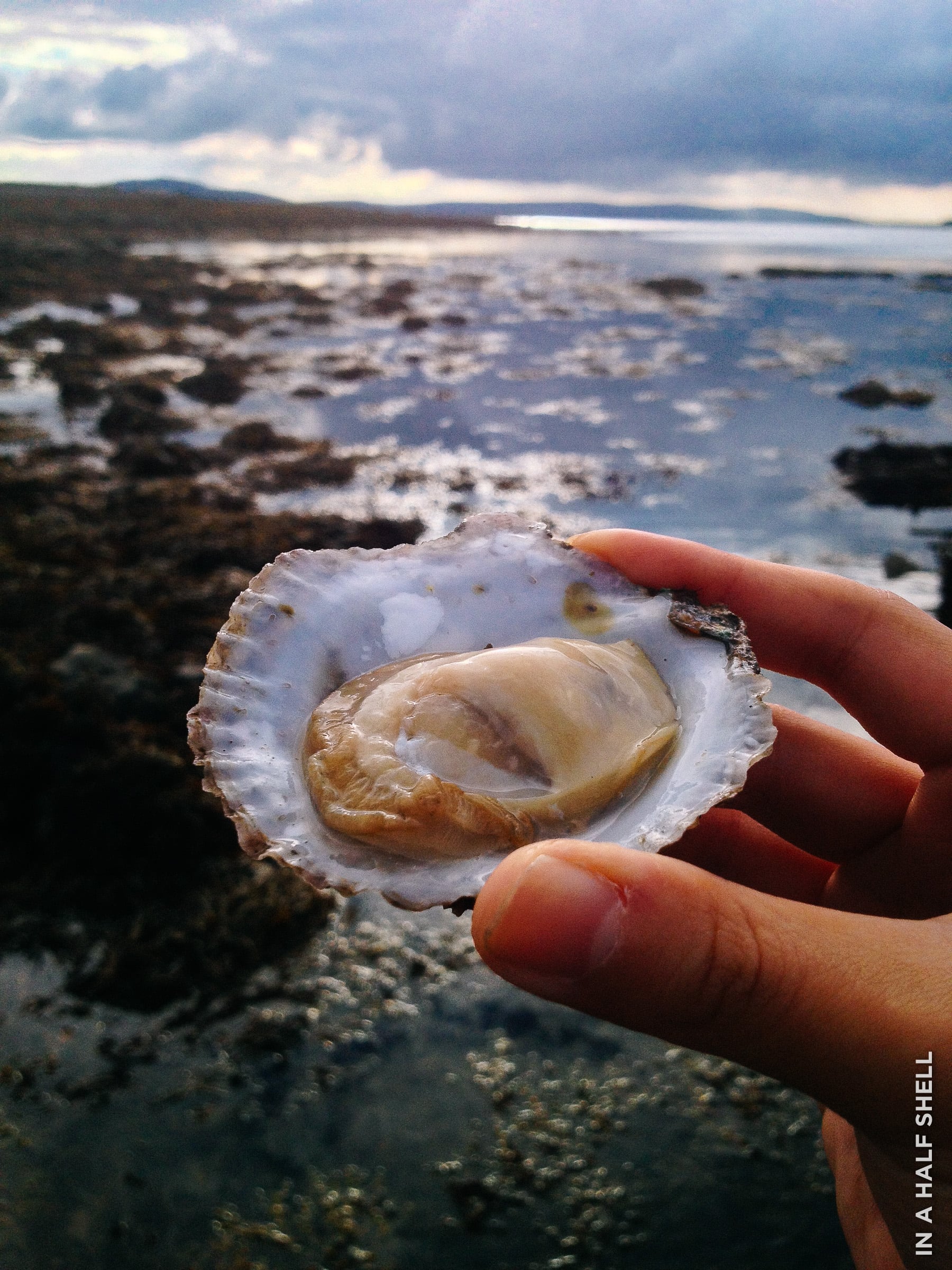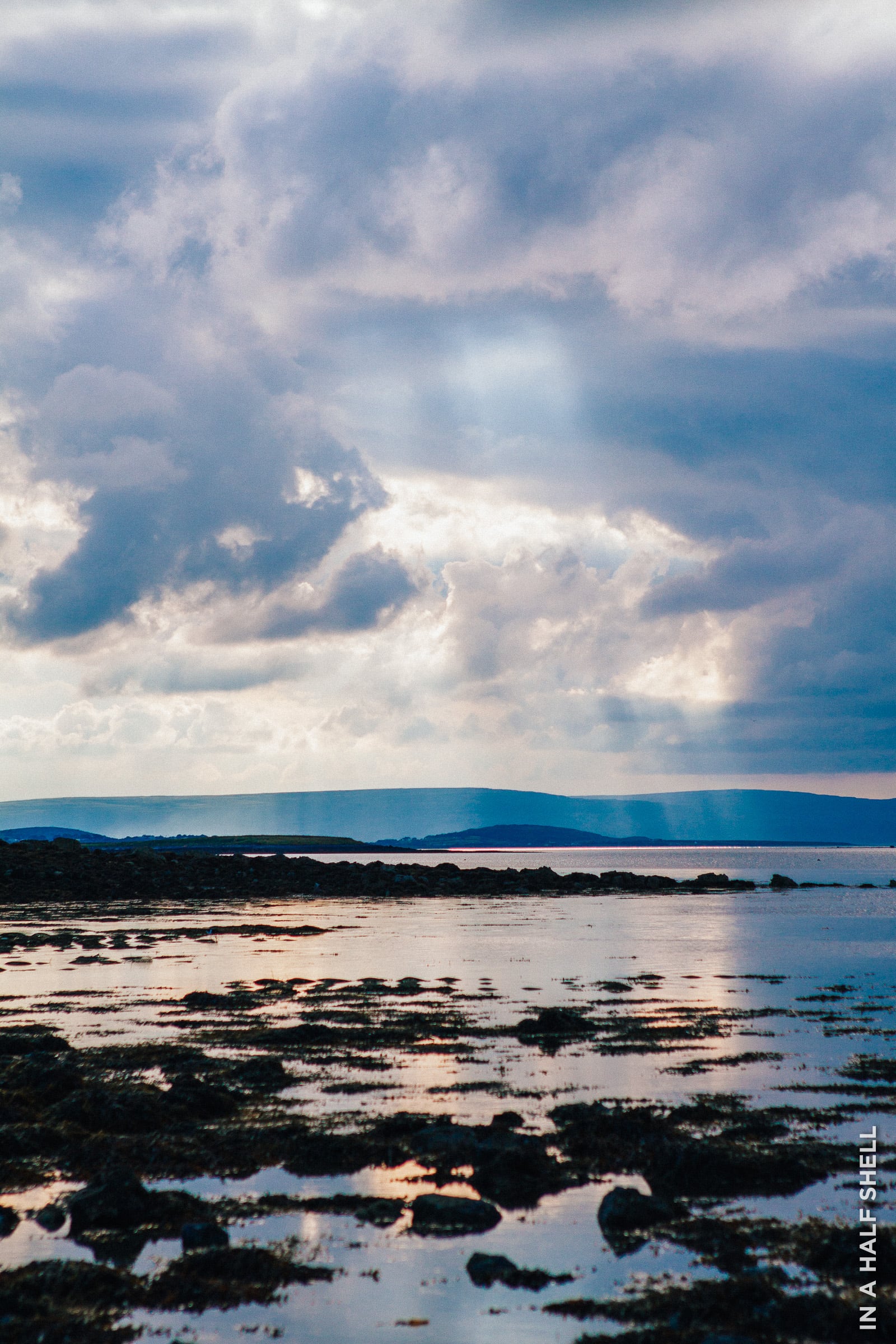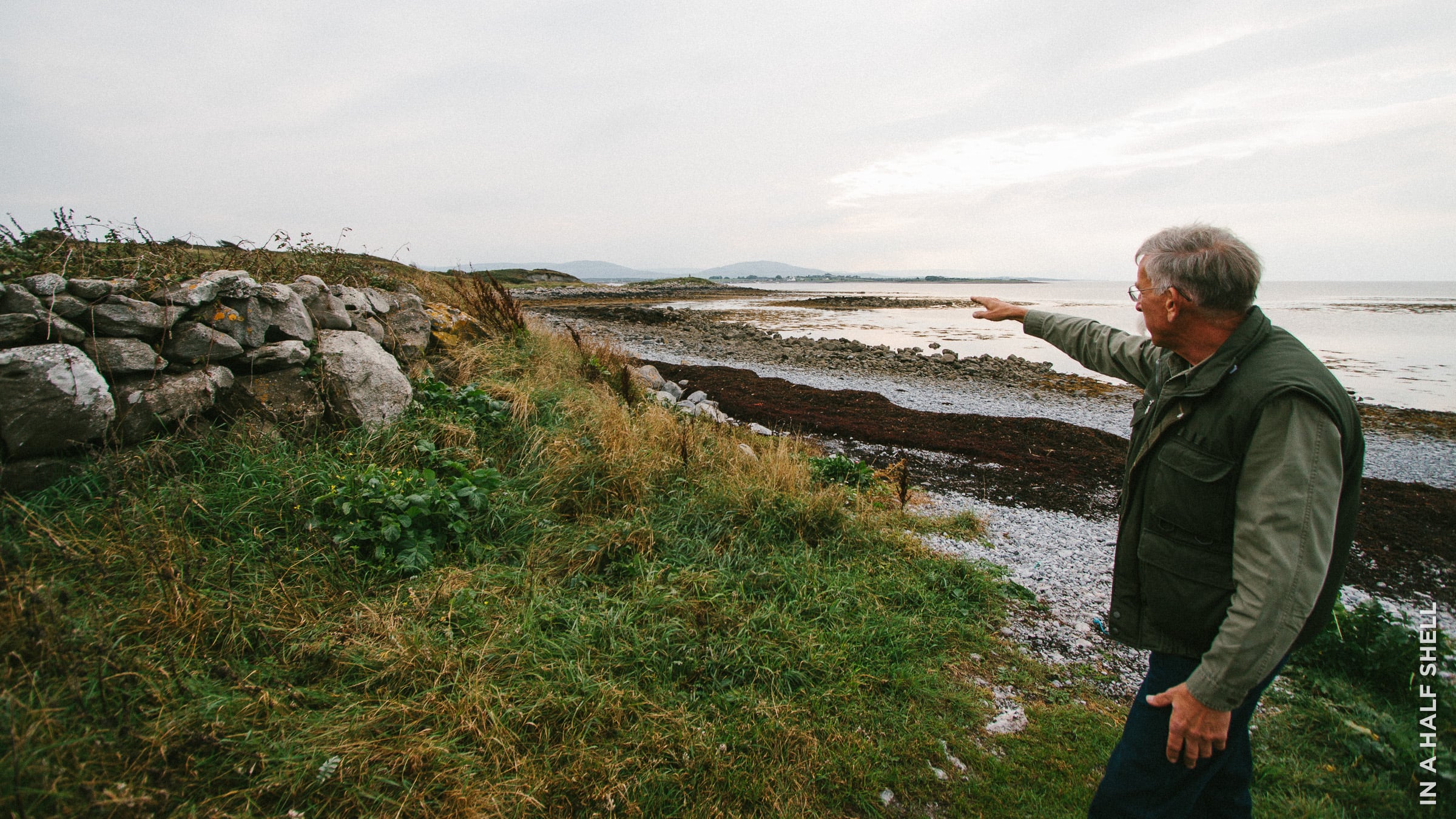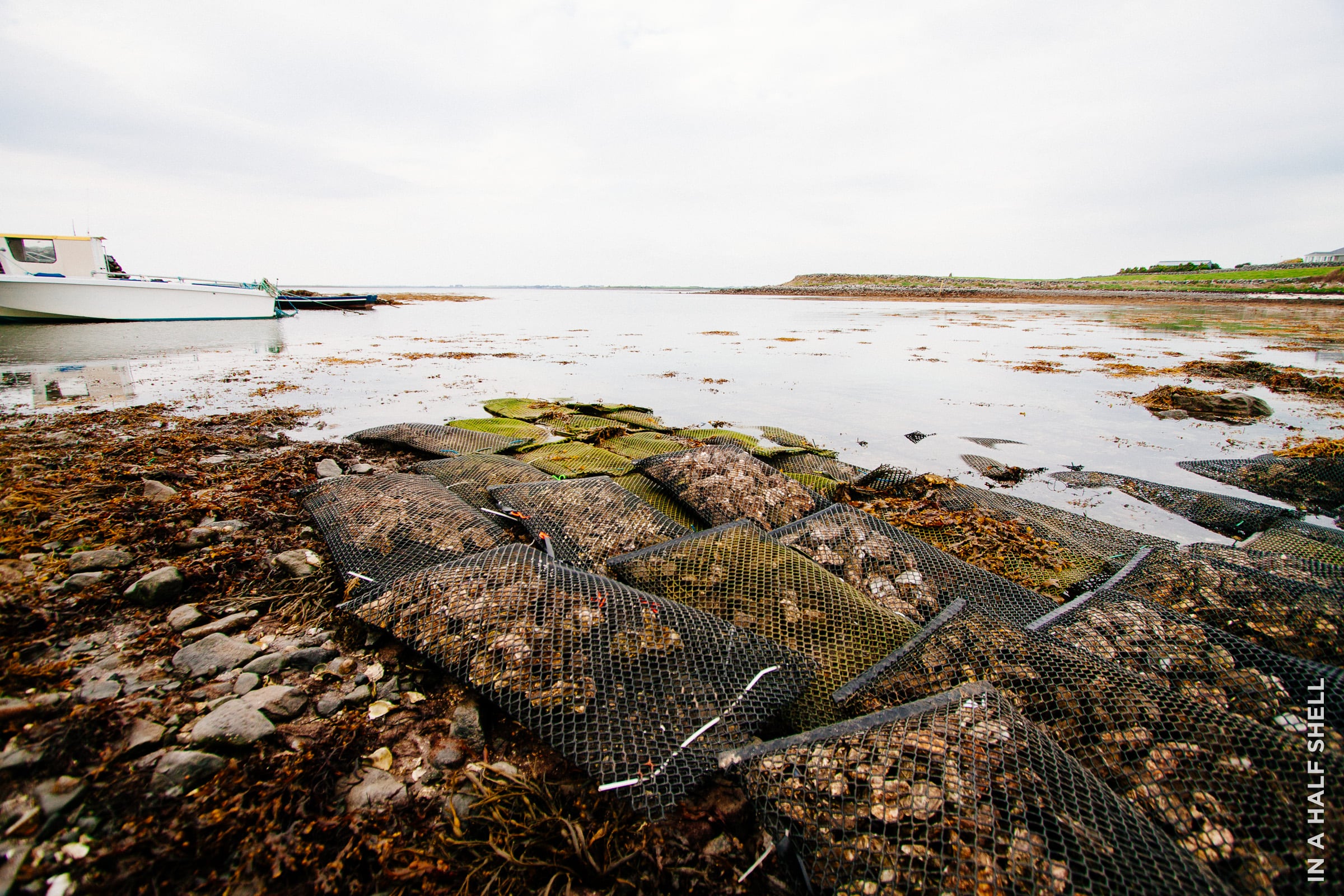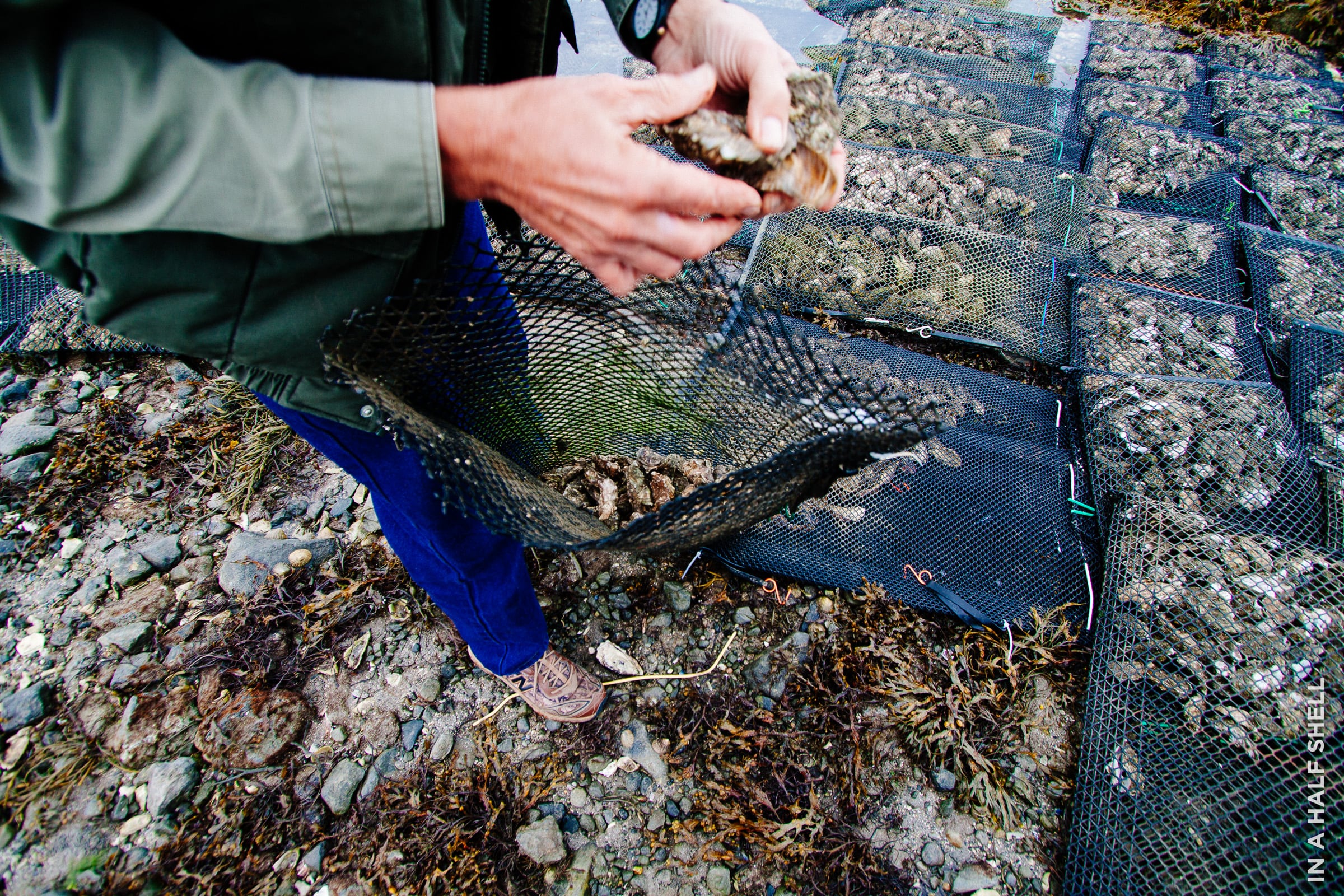Oysters of Ireland: Merroir (Part 1 of 3)
Ireland is world-renowned for its breathtaking scenery, history, sports and beer. But great oysters?
You better believe it! There’s no doubt that oysters are the Emerald Isle’s best kept secret. Ever since having my first Irish oyster (Kelly Galway natives in London, 2010), I was enamored by the idea of going to Ireland and enjoying them straight from the Galway International Oyster & Seafood Festival. Thanks to Bord Iascaigh Mhara, the Irish Sea Fisheries Board, not only was I finally able to do so, but I also had the opportunity to meet oyster growers from every region of Ireland.
It was an amazing adventure to say the least, and I plan to share the highlights with you all in this three-part series. The first chapter will cover the oyster farms that I visited, the second will focus on the oyster tastings, and the third will be a comprehensive recap of the Galway International Oyster & Seafood Festival. Now, it's time to shed some light on these delicious hidden gems of the Emerald Isle.
The oyster aquaculture industry in Ireland is small, but growing. There are approximately 130 companies all around the coasts that produce oysters and I managed to visit three distinctively different operations in the West. The majority of Ireland's oysters are exported to France (those lucky devils), where they are both consumed and also "finished" in French claires (fattening ponds). In fact, I was informed by those familiar with the business that much of the world-renowned Gillardeau oysters from France are actually grown out in Ireland. Because they are finished in France, they are technically allowed to be branded and exported as premium French products, but it speaks volumes about Ireland's own potential in this business!
So on that note, let's move onto the actual oyster farm visits.
Moyasta Oyster Farm
The first stop was Thomas Galvin's Moyasta Oyster Farm in Poulnasherry Bay, an estuary at the mouth of the River Shannon just halfway between Kilkee and Kilrush. The area around the bay is relatively flat, but gets a healthy upwelling of the Atlantic ocean twice a day. Thomas is in a unique position. He just took over the oyster business from his pop and is revving up to introduce Moyasta's to the Asian market. In recent years, cosmopolitan metropolises such as Hong Kong and Shanghai can't seem to get enough of oysters. The changing palate has spurred newfound interest for importing oysters from Ireland directly. Almost all of Ireland's oyster farmers knows this and some have already capitalized on the demand.
When we walked into the Moyasta warehouse, the first thing I noticed was just how clean everything was. The whole facility appeared to be spotless. Everything had its place, well maybe except for a heap of oysters scattered across the conveyer belt. Upon further examination of the oysters, it was striking to see such manicured shells. The colors ranged from light brown to deep purple. Practically no barnacles were stuck to the gorgeous ombre exteriors. I figured that they must do a lot of cleaning, but as it turns out, the Galvins hardly touch them. Their growing area seemed to be blessed with few hitchhiking critters. If they had oyster shell beauty contests in Ireland, I'd imagine that the Moyasta Oyster would be a strong contender.
Moyasta Premium oysters take about 3 years to reach market size. They are the Gigas species, which is traditionally known to us (Americans) as the West Coast variety grown in the Pacific. Over here, they do just fine in the Atlantic. Gigas oysters are the most cultivated species in the world and they make up nearly all of the production in Ireland. Their robust genetics make them easy to grow and less susceptible to disease. To keep up with them, and to help them form their beautiful deep cupped shape, Thomas has to turn and shake the oyster bags at least once a month. They call it "training," but I call it tough love. The movement produces a nicely pruned, sturdy oyster shell that is perfect to endure even the longest transcontinental flights.
It didn't take long for us to open a few up to try. I couldn't wait to taste them. These Moyastas were just 3 hours out of the water. Taking my first slurp, the instant rush of sea water hit my palate. The oyster itself was incredibly meaty and buttery, skirted with a crunchy, black mantle. A fresh and clean grassy, cucumber flavor became very apparent upon a couple of chews. The initial brininess was later neutralized and balanced by a mellow sweet finish. I couldn't get enough of them... we chatted and opened a dozen or so before moving on.
Hopefully with the help of BIM, my friends in Hong Kong will get a chance to try these out next year!
Kelly Oyster Farm
The next farm on the tour was the renowned Kelly Oyster Farm on Galway Bay. The farm is nestled between The Burren (an expansive, natural formation of limestone hills) to the south and boggy Connemara to the north. The minerals and nutrients from those mountains mix together in the water to create a rich serum that helps produce some of the best tasting oysters in the world. Diarmuid Kelly, son of the founding grower of "Kelly Galways," Michael Kelly, was gracious enough to give us a tour during a rather hectic time. Kelly Galway is the primary supplier of oysters at the Galway International Oyster Festival, and the official supplier of oysters for the International Oyster Shucking Competition.
We first went into the sorting and packing room, which had two items that really attracted my attention. The Kelly's has this really cool oyster sorting machine that looks like it could be a game on The Price is Right. Each oyster is placed on a slightly cupped paddle, which then circles around a central wheel until the weight of the oyster causes it to be dumped in a specific bucket. It's difficult to describe, but the visual was really mesmerizing. The next thing that captured my interest was the Kelly's packing method for their Native oysters. Each batch is hand packed in a precious little blonde wooden basket and cushioned with nature's bubble wrap: seaweed.
Kelly Galway Oysters produces both the Gigas (rock) and Edulis (native) species. They are one of the few remaining operations that do, and thank goodness for that. The farming process for the Natives is incredibly arduous and unpredictable. A fully mature Irish Native oyster is approximately 6 years!!! Can you imagine actively tending to anything for 6 years and then proceed to eat them in less than 6 seconds? Knowing this, I felt like I slowed down my savoring to last just a few more seconds longer.
Through the translucent water, I saw the oyster bags on top of their trestles. Diarmuid had us put on wellies to enter a shallow part of the bay. He picked up a couple specimens from beneath the depths and proceeded to shuck them effortlessly under the warm, afternoon sun. As this was happening, I couldn't help but feel awed by the scenery. In the distance, the bay sparkled brilliantly where the sun broke through the clouds. Closer towards us inland, water was still as glass in some areas and rippled with activity in others. I wished that this could've been my office day in and day out.
Diarmuid handed us a 6-year old Native. The Kelly Native Oyster tasted just like how I remembered it being. Maybe even better, given the conditions. The sharp, unmistakable mineral quality of the Native sang out immediately. The texture was brilliantly firm, chewy, and full of life. I also tried a "baby" native that was only 4 years old. Surprisingly, I preferred them over the older counterparts. The salinity of the 4-year olds weren't as blazingly aggressive, and the meat was a bit sweeter.
Following that, Diarmuid pulled out a mega Gigas oyster of at least 7 or 8 years old. It was the size of his palm. I couldn't handle it, but B was daring enough to try it out while I happily captured the feat on video!! I was so captivated by these oyster adventures that I almost let the rising tide flood my boots! Before I knew it, my 5 inches of footwear barrier turned into a dangerously close 1 inch. The waters change here very rapidly, which attests to the oyster's quality.
Galway Shellfish (now closed)
The third and final oyster farm visit we did was with Dan Barth of Galway Shellfish LTD in South Galway. Dan is an American transatlantic oyster farmer-slash-retiree originally from the Chicago area. He's had a rich career growing all sorts of seafood -- with two a notable stint farming geoduck in the Pacific Northwest. Nowadays, he spends a few months in Ireland out of the year with a couple business partners growing oysters and innovating new oyster products. We met during the BIM Oyster Conference, where I gave a presentation about the next generation of oyster consumers. From the get go, Dan was very friendly and hospitable. He drove us out to see the farm, as well as the surrounding areas.
By the time we arrived to Dan's site, the tide had swallowed up the farm entirely. "I promise you they're out there!" The oyster-less view didn't bother me whatsoever. It was a gorgeous, hazy afternoon. We walked over to another side of the bay where dozens of bags of oysters were being conditioned. Many of the bags glowed green with algae. There were a few bags of mussels as well, although oysters made up the bulk of their business.
The sorting and packing facility is an extension of Dan's house. (Shortest commute ever.) The oyster operations take place on an old dairy farm, which sits adjacent to an active cow and sheep farm. We didn't happen to see any livestock there, although they can be spotted all across the countryside. A row of working gloves neatly hung between a cement shed and the house. Cement or otherwise stone buildings were the norm in Ireland. I inquired why that was and Dan sort of waved his hand around the flat land in front of us -- there was no timber!
Dan invited us to have a little supper with him at his place, which was beyond nice. While experiencing new restaurants and doing touristy things is wonderful, one of the most precious joys of traveling is getting to feel "at home" somewhere else. We shucked a couple dozen raw oysters in the kitchen and accompanied them with soup and salad. The shells were sturdy and easy to handle. I had a choice of oyster knives, but opted for the Dexter that I was most familiar with. These oysters were brimming with ocean flavors. With so much salty fluid, I actually had to drain some of the liquor out (I know, I'm breaking my own rule). The meat was deliciously clean, creamy and punchy with faint hints of miso and seaweed. In a few, I even thought I detected a fruity, berry-like aftertaste. That might have been my palate playing a trick on me, but either way, it was really delicious! I couldn't have been happier!
After our oyster meal and tour, Dan took us to a local Irish pub for a pint or two or three (?) of Guinness. The pub an important establishment in every local community here. It provides a common area for all to gather and socialize, celebrate, commemorate, and even mourn. The pub is at the heart of Irish living, work, and travel. Unlike the bars in the US, I noticed the pubs here were age-neutral. Whether you're 20 or 60, everyone's drinking, watching hurling or rugby and having a good time.
Having the opportunity to get to know these amazing oyster farms and farmers of Ireland is an experience that I'll never forget. I want to thank Richard Donnelly at BIM for reaching out and somehow turning this crazy (amazing) plan into a reality.
Part 2: Tasting — BIM Oyster Conference
Part 3: Journey — Galway International Oyster & Seafood Festival








